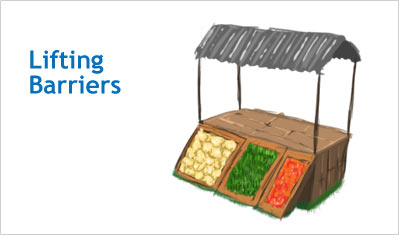By ‘small private irrigation’, we mean irrigation systems that are developed, owned or managed by individual farmers. They buy or rent irrigation equipment and draw water from nearby sources without depending on public agencies or Water Users’ Associations.
This has been common in South Asia for some years and is increasing in Sub-Saharan Africa. It is farmer-driven, responds to a demand from smallholders and has substantial potential for poverty alleviation and rural development.
Small private irrigation is spontaneous and unregulated. Farmers use anything from a bucket to an electric pump to help them grow crops in both rainy and the dry season.
In many African countries the smallholder private irrigation sector is more important than public irrigation in terms of the number of farmers involved and the value of the production.
Yet, governments and donors tend to focus on public or communal schemes. Official statistics on small private irrigation are absent and support is scarce.
As small scale technologies become more accessible, the potential for growth in the sector is enormous, particularly in sub-Saharan Africa where there is significant scope for expanding irrigated area. However, the individualization of irrigation and its spontaneous unchecked spread pose challenges to equitable access to water and sustainable management of resources.
It makes sense to support small private irrigation because millions of farmers and their families can benefit and it can contribute to national food security. Officially recognizing and promoting small private irrigation also provides more scope for developing the sector without jeopardizing the sustainability of water resource.
[row][column size=”1/2″ center=”no” class=””]
 For many farmers across the project, getting the water onto their crops is a challenge. Farmers who have access to irrigation have substantially higher incomes and better food security than their neighbours who rely on rainfall.
For many farmers across the project, getting the water onto their crops is a challenge. Farmers who have access to irrigation have substantially higher incomes and better food security than their neighbours who rely on rainfall.
 Several factors influence the ability of a farmer to make use of an agricultural water management (AWM) option. In many cases it is not possible to simply provide a source of irrigation water or to put a technology on the market.
Several factors influence the ability of a farmer to make use of an agricultural water management (AWM) option. In many cases it is not possible to simply provide a source of irrigation water or to put a technology on the market.
![]()









